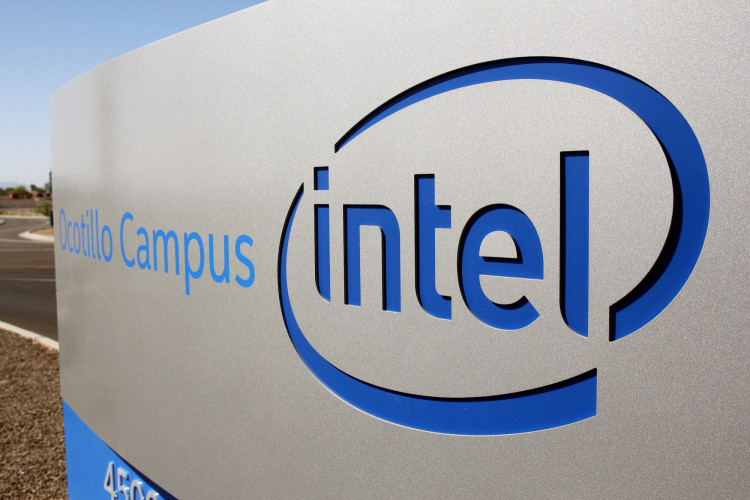Intel Corporation (INTC) announced a $10 billion cost reduction plan, including significant layoffs and a suspension of its dividend payments, following disappointing second-quarter earnings. The chipmaker's stock plunged over 20% in pre-market trading on Friday, signaling investor concern over the company's future prospects.
Intel, struggling to regain market share from rivals like AMD and Nvidia, reported earnings per share (EPS) of $0.02 on revenue of $12.8 billion. Analysts had expected EPS of $0.10 and revenue of $12.9 billion. The company's forecast for Q3 revenue between $12.5 billion and $13.5 billion also fell short of Wall Street's expectations of $14.3 billion.
CEO Pat Gelsinger announced the layoffs in a memo to staff, describing the decision as "the hardest thing I've done in my career." He elaborated, "Our revenues have not grown as expected - and we've yet to fully benefit from powerful trends, like AI. Our costs are too high, our margins are too low. We need bolder actions to address both."
The restructuring plan involves slashing 15% of Intel's workforce, which translates to more than 15,000 jobs, and reducing research and development and marketing expenses by billions annually through 2026. Additionally, Intel plans to reduce capital expenditures by more than 20% this year and halt non-essential work.
The layoffs are part of Intel's broader strategy to realign its cost structure and improve operational efficiency. "We will drive companywide operational and cost efficiencies, including the cost savings and head count reductions mentioned above," Gelsinger noted. This restructuring aims to make Intel a leaner and more agile company.
Intel's second-quarter loss of $1.6 billion starkly contrasts with the $437 million loss reported last quarter. Despite hitting key product and process technology milestones, the company's financial performance lagged. Gelsinger acknowledged the disappointing results, stating, "Our Q2 financial performance was disappointing, even as we hit key product and process technology milestones."
The company's Data Center and AI segment, a critical area for future growth, reported revenue of $3.05 billion, slightly below expectations of $3.07 billion. While this segment holds potential due to the massive demand for CPUs and GPUs to power AI applications, Intel's GPUs are not as in demand as Nvidia's, which are considered superior for AI processing.
Intel's Client segment, which includes sales of chips for enterprise and consumer computers, remains the company's largest business. In Q2, Client revenue reached $7.4 billion, just shy of Wall Street's anticipated $7.5 billion. This segment's performance underscores the challenges Intel faces in an increasingly competitive market.
Adding to Intel's woes, Qualcomm's new Snapdragon X Elite PC chip, released as part of Microsoft's new Surface Laptop and Surface Pro, presents a formidable challenge. This chip offers better power and battery life than competing Intel and AMD chips, posing a significant threat to Intel's dominance in the PC space. Intel is expected to launch its response to Qualcomm's processor later this fall.
Intel's Foundry business, which aims to rival Taiwan Semiconductor Manufacturing Company (TSMC), is another area of focus. The company is opening its foundries to third-party chip designers, hoping to create a robust business. However, progress has been slow, with Intel being its largest client so far. The company aims to attract more customers, including Microsoft, but gaining traction in the market will take time.
Gelsinger emphasized the need for bold changes, noting, "We must align our cost structure with our new operating model and fundamentally change the way we operate." He announced that Intel will offer a "companywide enhanced retirement offering for eligible employees" and will broadly invite voluntary layoffs starting next week.
The CEO also highlighted Intel's commitment to its core investments, despite the cost-cutting measures. "Our IDM2.0 strategy is unchanged. Having fought hard to reestablish our innovation engine, we will maintain the key investments in our process technology and core product leadership," he asserted.
Intel's challenges are not new. The company had previously announced a major round of layoffs in October 2022, aiming to cut between $8 billion and $10 billion in costs annually through 2025. Despite a 5% headcount reduction in 2023, Intel's workforce grew back to 130,700 employees by March 2024.
Investors have not responded favorably to Intel's recent moves, with the company's stock performance reflecting ongoing concerns. "Intel is now the worst-performing tech stock in the S&P 500 this year," CNBC reported in April. The company's reliance on TSMC for manufacturing some of its most advanced chips further complicates its position in the market.




